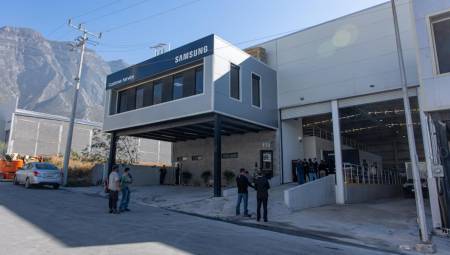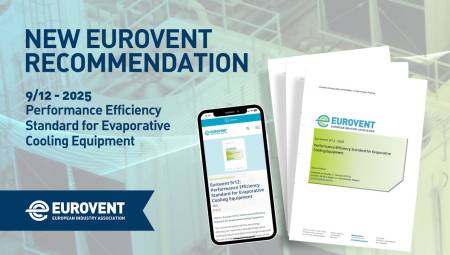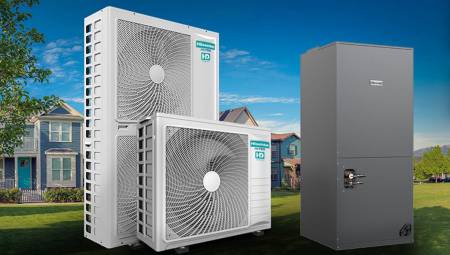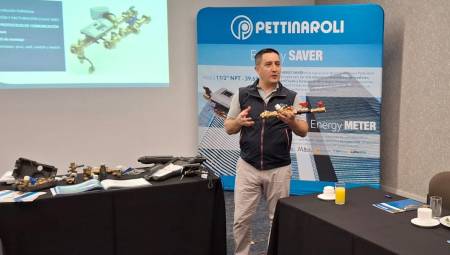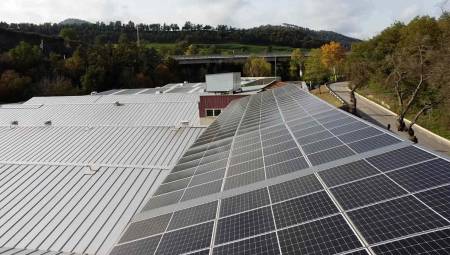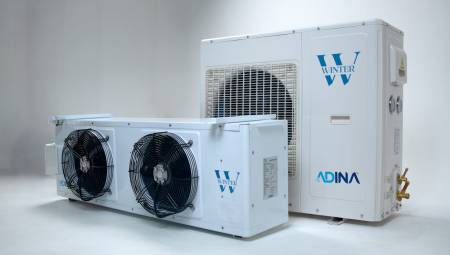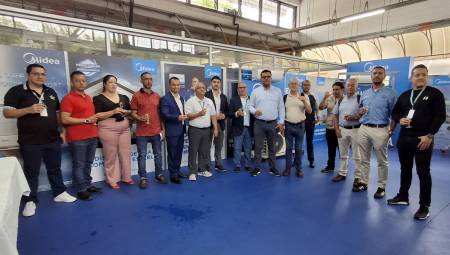
There are several methods to refrigerate trucks, one of the most basic systems that is still used is simply to package the product in ice previously made in a factory, this method works quite well for short periods of time in trucks that are well insulated. However, melted ice produces an amount of water that needs to be treated. For many years, it has been very easy to distinguish this type of truck by the trail of water that they were leaving behind them. With this method, only the temperature of the load can be maintained above the freezing point.
Dry ice, which is compressed and solidified carbon dioxide, is also often used in short transports. Because of how cold this type of ice is, it is somewhat difficult to maintain the correct temperature level of the cargo. Dry ice goes from the solid to the gaseous state at -78.3 ºC (which is called sublimation) without going through the liquid state. Thanks to the temperatures of this ice, the temperature of food products can be lowered considerably. However, one of the problems of using dry ice is that food that is not in airtight containers can be dehydrated, since a temperature as low as -78.3 ºC attracts moisture from the food. Liquid nitrogen or liquid carbon dioxide (CO2) can also be used to refrigerate food.
To do this, you have to use nitrogen that has been refrigerated and condensed in liquid and then stored in a cylinder in the truck at low pressure. This cylinder has an exhaust valve that releases some of the steam into the atmosphere if the pressure inside it rises above the set point of about 175kPa. This causes some of the remaining liquid to boil to lower the temperature and pressure of the cylinder. The liquid is driven to a distributor, where the refrigerated product is located, and released to cool the air in the truck and the product. In the food area there is a thermostat that serves to regulate a solenoidal valve in the liquid nitrogen duct, stopping and activating the flow of liquid, as shown in Figure 1. Fans can be used to spread cold steam evenly across all products.

The air in the atmosphere is composed of 78% nitrogen and is the source of nitrogen used for cooling. It is non-toxic, so it can be released into the atmosphere without fear of harming the environment.*Nitrogen does not contain oxygen, so it is not suitable for breathing. There are a number of interlocks that turn off the cooling system if the refrigerated truck door is opened, in order to prevent staff from suffocating from lack of oxygen. Also, nitrogen is very cold; evaporates at -195.6 ºC at atmospheric pressure. For this reason, the slightest contact of nitrogen with the skin causes immediate freezing of the meat. *Never allow liquid nitrogen to come into contact with your skin.
Liquid CO2 can be used in the same way as liquid nitrogen to cool products. This system works almost exactly the same as liquid nitrogen except that CO2 boils at -78.3 ºC. Although both liquid nitrogen and CO2 are very cold, they can be used to cool medium temperature loads at 2ºC, using the appropriate regulators. These regulators would include a refrigerant distribution system that does not affect the product and a thermostat that accurately measures what the temperature of the refrigerated space is.
These two methods of liquid injection have been used for many years as substitutes for mechanical cooling in permanent installations and for emergency cooling. Probably, these methods are more expensive in the long run than a permanent installation, but it is also true that they have some advantages. For example, if they are used to refrigerate fresh food, the presence of CO2 gas or nitrogen removes oxygen and the food is preserved.
This system is very simple and very easy to control, because you only have to maintain a solenoid and a distributor. Many trucks are equipped with refrigerated plates (called cold plates) that have a phase change solution inside called a "eutectic solution." Phase change means the change of state from ice to water, except for the fact that a different temperature takes place. At the time when the change of state takes place, much more heat is absorbed per kg of material. This "eutectic solution" has the ability to change state at many different temperatures, depending on the composition of the product.

The "eutectic solution" of the cold plate is brine, a type of salt water that uses sodium chloride, a class of table salt, or calcium chloride. This brine is very corrosive, so it must be handled very carefully. Various concentrations of brine can be used to achieve the desired melting temperature below the freezing point, which is called the "eutectic" temperature. In fact, the brine does not freeze into a solid block, but salt crystals are formed and the rest of the solution remains in a liquid state. Different concentrations of brine cause crystals to form at different temperatures.
The brine solution is in plates that have a thickness of 2-8 cm. These plates are usually installed on the walls or roof of the truck, so that air can circulate around it (see Figure 2). The air in the room transfers heat to the plates. The brine solution changes its state from solid to liquid while absorbing heat. To recharge these plates, you have to cool them until they change state and become solid crystals, these plates will keep the load refrigerated at the correct temperature (in medium and low temperature applications) during a distribution that lasts all day. For example, you could load a truck of ice cream at night to deliver the next day. The ice cream has to be at its correct temperature and the cold plates of the truck have to be at its design temperature. In the case of ice cream, this temperature could be -24 ºC or lower. When the truck returns at night it may still be at -24 °C, but most of the brine solution will have become liquid again, so it would have to be recharged to reach the solid crystal state. The heat absorbed during the day is in the brine solution and must be removed. There are different ways to charge the plates. Some systems have a direct expansion coil located on the cold plate. This coil connects to the cooling system at the loading dock (Figure 3).

The cooling system can use any of the most common refrigerants: R-22, R-500 or R-502, or even Ammonia gas R-717. When the truck returns to the loading dock, quick-connect hoses are connected to it from the central cooling plant. The expansion valve can be found on the loading dock or on the coil of the eutectic cold plate.
The central cooling system will reduce the pressure in the cold plate evaporator, so that the brine solution is converted back into solid crystals within a few hours. Then the truck can already be loaded with the products.
Another method of recharging the cold plate is to circulate a refrigerated brine solution through a coil located on the cold plate itself. Brine that has been refrigerated to a temperature lower than that of the cold plate will recharge or cool the brine of the cold plate. The brine that is circulated has to be much colder than the cold plate solution. To connect this system to the truck you also have to use a series of quick connection joints at the loading dock. There is always the possibility that part of the brine will be lost during the connection and disconnection of these joints. In that case, the spilled brine would have to be cleaned or corrosion would occur.
Trucks can also be cooled using a cooling system integrated into the truck itself, regardless of the cooling source used, it must always have an energy supply. This energy can come from the truck's own power supply, from a compressor powered by a gasoline or diesel engine, from a land power line (such as the electrical power of a building), or from an electric compressor running on an engine generator. Van-type delivery trucks typically use a refrigeration compressor installed under the hood, rotated by the truck's engine. Cooling can be regulated by turning the compressor on and off using an electric clutch controlled with a thermostat (Figure 4).

This system works quite well, as long as the truck's engine is running. Since the truck is moving all day during delivery, it is very easy to maintain cooling.
Some of these trucks have a motor-driven electric auxiliary compressor that can be plugged into a plug in the loading dock, while the truck's engine is turned off.
To refrigerate the goods, trucks with small condensing units located at the bottom are also used. They are normally used to recharge cold plates at night, when the truck is on the dock or to recharge other energy sources, while cold plates are used during the day (Figure 5).

The advantage of this system is that it is autonomous and does not need to be connected with a central cooling system at the loading dock. These condensing units can be powered when the truck is on the road using a small generator installed under the chassis. In this case, there would be no need to use cold plates, because the generator would work on the road itself and at night the compressor could be plugged into an electrical outlet. The generators have a diesel or diesel engine that rotates the generator to produce a current of 230 V and 50 cycles, in order to run the compressor. The fuel that is usually preferred for these generators is diesel, because diesel engines run for much longer on less fuel and require less maintenance. Diesel engines have a very high initial cost but, in the long run, they are much more economical.
In some cases, a generator that produces 230 V from the truck's engine has been used. This generator has to have a fairly sophisticated regulator, because the truck engine rotates at different speeds. The fixed generator has only one speed. The different speeds would affect the energy supplied to the compressor. As the motor spins faster, the voltage and cycles per second change; 50cps is normal to maintain a constant tension. Larger trucks use nose or belly units, which can be operated using a diesel engine powered by a compressor or a generator powered by a diesel engine. When the motor rotates the compressor, a regulator controls the speed of the compressor. This system can be two-speed: high or low. The compressor can be regulated using a cylinder discharge mechanism in the compressor. For example, suppose we have a 4-cylinder compressor with a capacity of 1 ton per cylinder, you can run the compressor from 1 to 4 tons by discharging through cylinders. There must be a minimum load of 1 tonne at all times or on and off cycles will have to be applied to the diesel engine.
The most advisable thing is to keep the engine running; however, regulators have been developed for diesel engines, which automatically turn them on and off (Figure 6). The evaporator of these condensing units is usually at the front of the truck and moves the air to its back. The fan is usually a type of centrifugal fan that distributes a lot of air at high speed, so that the air can reach the back of the truck. The air is then returned to the inlet of the air handling device over the product cargo. The fan is driven from the motor that drives the compressor, using belts or gearboxes. These components are usually placed inside the access door to the unit, where they can be easily checked and repaired from the outside of the refrigerated space.

The evaporator fan is usually a type of centrifugal fan, the condenser fan is driven by the same mechanism and is usually of the propellant type. Condenser and evaporator coils are usually made of copper, with aluminum fins. These truck cooling systems have to be designed and built in such a way that they are both sturdy and lightweight, as each truck has a maximum load limit.
The additional weight added to the refrigeration unit shall be weight that will no longer be able to be transported as paid goods. Many of the components are made of aluminum, such as the compressor and any other component that allows its manufacture and maintenance with this lightweight material.
The cooling systems of the roads have to be designed in such a way that they allow to transport goods of both low and medium temperature. Half the time, these trucks will transport fresh vegetables and, the other half, frozen food. The space temperature is regulated with a thermostat that begins to fully charge and, when the space temperature is approximately 1 ºC from the set point, the system begins to discharge the compressor. If the temperature of the space continues to drop, the unit turns off.
Air distribution for truck cooling is designed to keep the load at a specific temperature, not to bring it down. As we have already mentioned, food should be at the desired storage temperature before loading it into the truck. The truck does not have enough reserve capacity to lower the temperature, especially if the inside of the truck is too hot.
If the refrigeration system of a medium-temperature food shipment has to reduce the temperature, the air distribution system may over-cool some of the higher areas of the cargo, as the truck is so small that the cold air from the evaporator can directly affect the products at the top (Figure 7).

If the shipment consists of frozen food that has been heated, it has most likely partially melted and the truck unit may not have enough capacity to refreeze the product, and if it does, freezing could be so slow that the food could spoil. There are several alarm systems that serve to warn the truck driver of the existence of problems in the merchandise (figure 8).

At the first symptom of problems, the driver should stop the truck and check the cooling system. It may not be easy to locate a technician if the truck is not near a metropolitan area, where technical services are usually located.
Trucks usually have insulation to prevent heat from entering them. To do this, a foam insulator with pressed fiber that extends throughout the walls is usually used. Thanks to this, a very strong multilaminar structure is created on the walls (Figure 9).

These walls have to be resistant to be able to withstand the loading and unloading of the product, so they usually use plastic products reinforced with fiber and aluminum. The floor also has to be sturdy enough to support the weight of the load during motorway journeys; it also has to be able to withstand the forklifts that are used to load the products onto the truck. The interior construction of a refrigerated truck has to allow it to be kept perfectly clean easily, since in this area you will work with food. The doors are usually located in the back to be able to load the truck with a forklift; however, there are some trucks that have side doors and various compartments to store different types of products in them. For example, a refrigerated truck may have to transport both medium-temperature and low-temperature products at the same time.
To do this, a cooling condensing unit with several evaporators would have to be used. Refrigerated truck doors must have an sealing gasket to prevent air from the outside from leaking into the truck. These doors must also have a security lock to ensure that no one can steal the cargo. The truck cooling specialist has to know both diesel engines and cooling.
The technicians who are dedicated to this type of refrigeration are trained in both disciplines and do not usually dedicate themselves to other types of refrigeration. Many times, these technicians are trained in the factories themselves to maintain a cooling system combined with some particular type of engine. For trucking, it is always advisable to know the basics of cooling and diesel engines.


